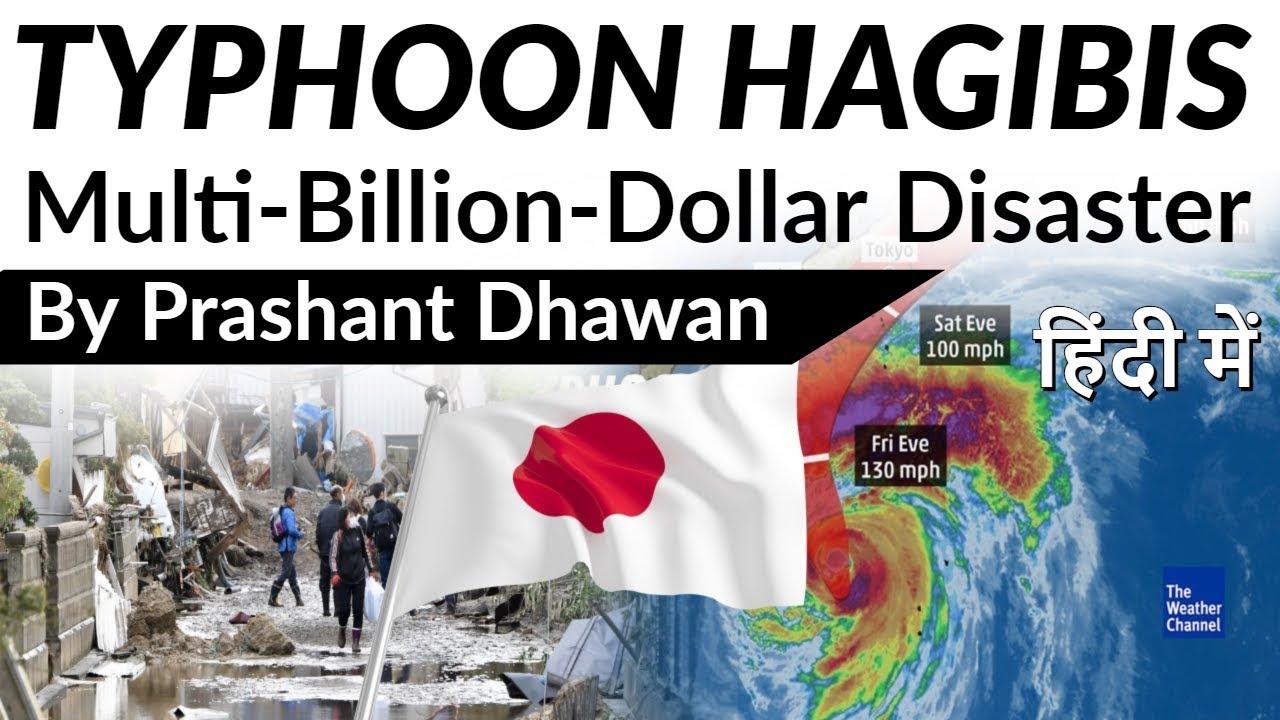Table of Contents
TYPHOON HAGIBIS
- The main Japanese island of Honshu was hit by Typhoon Hagibis on 12th October 2019.
- Typhoon is a region-specific name of the Tropical Cyclone (swirling system of clouds and thunderstorms that originates over tropical or subtropical oceans). In the Atlantic and Northeast Pacific, the term “hurricane” is used. The same type of disturbance in the Northwest Pacific is called a “typhoon” and “cyclones” in the South Pacific and the Indian Ocean.


TYPHOON HAGIBIS
- Typhoon Hagibis could be the strongest storm to hit Japan since 1958.
- Typhoon Hagibis, which means “speed” in the Philippine language, had packing winds of 195 km per hour near its centre.
- The storm brought record-breaking rainfall to many areas, resulting in floods and landslides in the country.
- Typhoon Ida, known as the “KanogawaTyphoon” in Japanese, killed more than 1,000 people in September 1958. Ida had winds of 190 kmph when it hit the country.
TYPHOON HAGIBIS
- Category 5 super typhoon (SSHWS)


TYPHOON HAGIBIS
- As of 16 October 2019, at least 77 people have been confirmed dead and 10 others went missing in Japan.
- About half an hour before Hagibis made landfall, a magnitude 5.7 earthquake occurred off the coast of Chiba Prefecture, worsening the dangerous condition even more. India has sent two warships to the waters of Japan to help the Asian nation battered by typhoon Hagibis in relief operations, the Indian Navy said on Sunday, hours after Prime Minister Narendra Modi gave his condolences to Japan.

THE DISASTER
- Hagibis is likely to be a multi-billion-dollar disaster, with extensive damages to homes, businesses, and some of Japan’s fabled (and it turns out, expensive) bullet trains.
- Total 9 billion dollars in damage to Japan
THE DAMAGE
- Hagibis will almost certainly be a multi-billion dollar disaster, adding to the list of hellacious weather calamities that have befallen Japan in recent years.
- Typhoon Faxai hit Japan just last month and wrought $7 billion in damage. Last year’s Typhoon Trami and Typhoon Jebi caused a combined $15.9 billion in losses, according a report from Munich Re. That means four of Japan’s most costly typhoons have occurred since 2018.

JAPAN CAN EXPECT MORE HIGH-IMPACT STORMS LIKE HAGIBIS
- Climate studies suggest the Japanese archipelago could see more frequent and stronger typhoons in the future, due in large part to warming seas as a result of human-caused global warming. There is evidence showing tropical cyclones in the Northwest Pacific Ocean Basin are reaching their maximum intensities farther north than they used to, a trend some scientists attribute in part to climate change. This could send more intense storms into areas that typically see weaker storms, such as Honshu and other parts of northern and northeastern Japan.


Latest Burning Issues | Free PDF





















 WhatsApp
WhatsApp